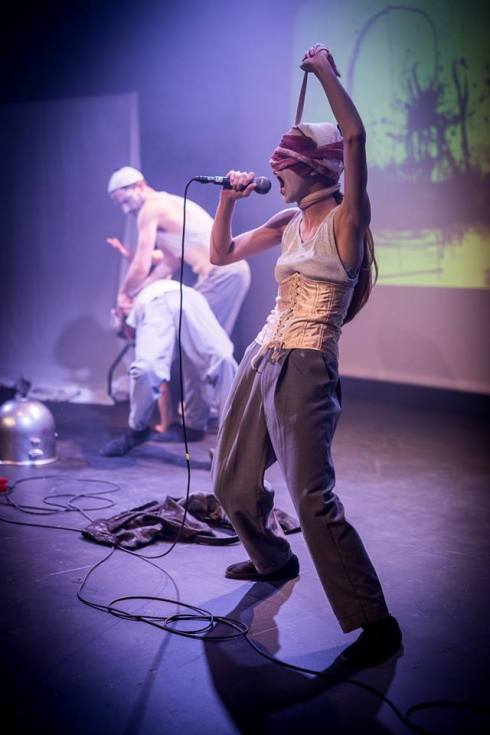‘Surely all theatre is visual theatre? I mean you watch it don’t you? Or do you sit in the dark?’ 
I tried to think of a clever response, something intelligent and witty to say that would make me sound like I had a clue. Instead dumbfounded, lost for words I slowly said: ‘I honestly don’t know’ and,sadly, I didn’t.
Regardless of understanding what the genre itself means, I watched the ‘Best of the Fest’ that showcased the highlights of the animation films and enjoyed the turbulent change from one short clip to another. Despite trying to forget the term, I was still determined to try and understand what ‘visual theatre’ was. [The curse of the fourth year theatre student – you feel as though you should understand.]
I came up with a definition: visual theatre is theatre that is performed without large amounts of speech and dialogue and instead uses music and movement to tell a narrative or convey emotions to its’ audience. I have done it. I have defined visual theatre. I then realised: I have defined dance.
The first step to understanding ‘visual theatre’ is accepting that you don’t have to understand it. There are no dictionary or encyclopaedia definitions explaining it, instead you go in and watch a series of beautiful art pieces which are all tied together under the umbrella term ‘visual theatre’.
Similar to a cookbook that presents you with a thousand flavours that you could never imagine together and an exotic and alarmingly long list of spices (if you have ever come across Yotam Ottolenghi or Heston Blumenthal you will understand what I’m referring to) ‘visual theatre’ when you describe it comes out as more of a list of art-forms than a definition. Yet somehow, like a complicated recipe, it is a lot more simplistic and far more pleasing than you first imagined and the result means you try new artforms you hadn’t considered before.
This is what is so fantastic about the Manipulate Festival, it twists and challenges your expectations, it is not a theatre festival, not a dance festival and not a film festival – yet somehow it managed to combine all of them. You cannot accuse it of being a case of too many cooks either, Simon Hart, Jen White and Fay Butler programmed the perfect balance of different art-forms. And the term ‘visual theatre’ is simply there as a heading for their exciting and continuously changing showcase of artwork.








 With animator Iain Gardner leading the discussion, 2012 Edinburgh College of Art graduate Claire Lamond presents a collection of short animated films. These include three of Lamond’s own creations and a selection of shorts by other animators. The other shorts deal with various social/mental health issues, such as dealing with grief after losing a loved one and fear of the world.
With animator Iain Gardner leading the discussion, 2012 Edinburgh College of Art graduate Claire Lamond presents a collection of short animated films. These include three of Lamond’s own creations and a selection of shorts by other animators. The other shorts deal with various social/mental health issues, such as dealing with grief after losing a loved one and fear of the world.

